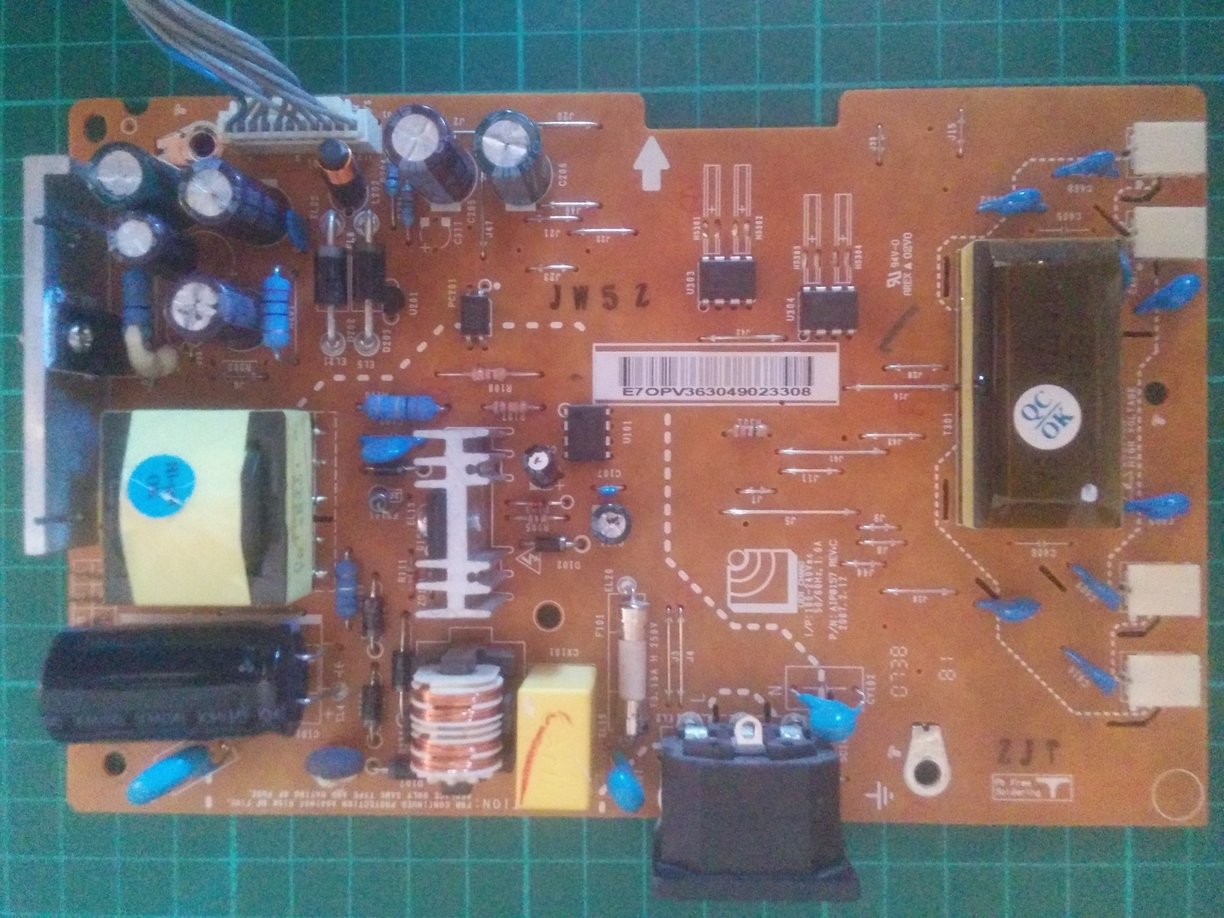Recently, my computer monitor has stopped turning on, I think this could be down to a few faulty capacitors... I think. I tested the output of the power circuit and the outputs, 12v and 5v, were working, when I added some load (using a 4.4Ω resistor) the 5v line died.
I removed all the capacitors from the PCB and tested them with a multimeter set to measure resistance. I can watch the capacitors charge; they all look fine though (I'm not sure if there's a better way to test them than this though?).
I still thought that it could be a problem with a few capacitors as they looked like they had slight bulges in the tops, so I found a capacitor from an old computer PSU that matched the spec (1000µf 25v) and tried my monitor with this... success. However this morning, the monitor has stopped working again, so I'm going to just replace all of the capacitors and see if that resolves the issue.
I've just started looking for capacitors online to replace all of the ones on the power supply board, however there are so many different types. I'm looking on uk.rs-online.com, but say I've searched for 1000µf 25v electrolytic capacitors, loads of different ones are returned at varying prices, does it matter which one I choose? Some of them are labelled 25v dc, could you explain what the difference between a capacitor labelled 25v and one labelled 25v dc are? Are there other things I need to take into consideration when buying these capacitors other than voltage and capacitance?
Here is the power supply board that is faulty:
A close up of a couple of the capacitors:



